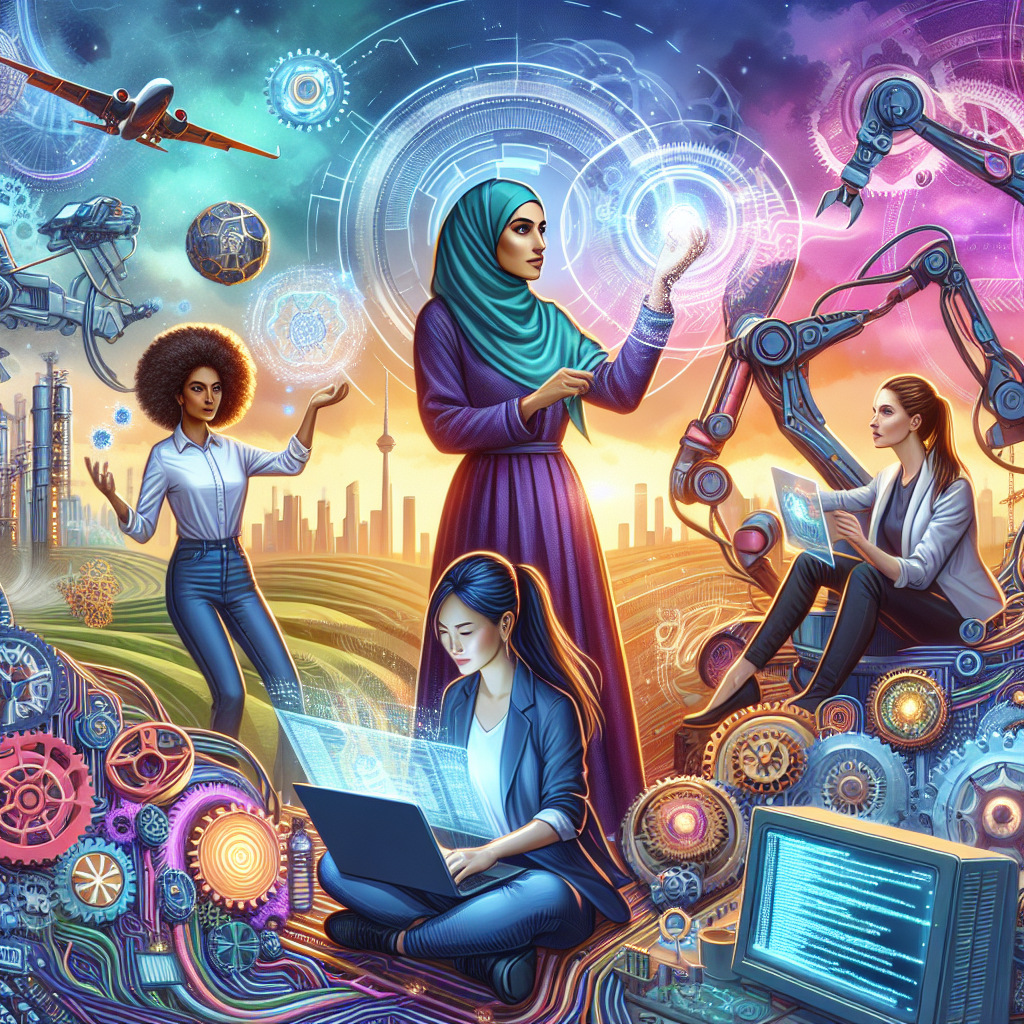The world of automation has long been viewed as a male-dominated domain, often characterized by complex machinery, advanced algorithms, and cutting-edge technologies. However, as industries evolve and the demand for innovation intensifies, women are increasingly stepping into roles traditionally held by men. Their contributions are not only pivotal for the future of automation but also signal a significant shift in gender dynamics within the technology landscape.
The Current Landscape
Historically, women have faced significant barriers to entry in technical fields. Stereotypes, cultural expectations, and a lack of role models have hindered their participation in science, technology, engineering, and mathematics (STEM). However, organizations and initiatives aimed at promoting gender equity are beginning to make headway. According to a report from the World Economic Forum in 2022, the number of women in technology-related jobs has increased, yet they still make up only about 25% of the workforce in engineering and related fields.
In the automation sector, which encompasses a broad spectrum of industries—from manufacturing to logistics and beyond—women are increasingly taking on leadership positions and contributing to groundbreaking advancements. This change is critical, not only for gender equality but also for the innovation that diverse perspectives can bring to the table.
Pioneers and Trailblazers
Women like Cynthia B. Sullivan, a leader in industrial automation with decades of experience, exemplify how female professionals are breaking through barriers. Sullivan’s journey in automation began in engineering, where she worked on complex automation for manufacturing processes. Her innovative work has since influenced countless projects, inspiring younger generations of women to pursue careers in technology.
Another figure, Dr. Ayanna Howard, a robotics expert and AI researcher, has played a significant role in advancing automation technologies. As the president of a prominent university, she advocates for virtual robotics and automation education, aiming to reduce the gender gap in these fields. By sharing her knowledge and experiences, Howard motivates many girls and young women to see careers in automation as viable and exciting options.
Why Diversity Matters in Automation
Diversity in the workforce has been correlated with enhanced creativity and problem-solving abilities. In the high-tech world of automation, this is particularly crucial. As the industry faces technological challenges ranging from AI ethics to cybersecurity, varied perspectives can lead to more comprehensive solutions that take into account a wider array of human experiences and needs.
Moreover, women bring unique insights into design and functionality, ensuring that automation solutions are user-friendly and accessible to all. This inclusive approach often results in products that not only solve technical problems but also enhance the user experience, leading to improved adoption rates and overall success.
Initiatives Fueling Change
Many organizations are now recognizing the importance of fostering talent among women in automation. Initiatives such as the Women in Automation Network and the International Women in Engineering Conference are crucial in providing networking opportunities, mentorship, and educational resources. Corporations are also stepping up by creating supportive environments that encourage women’s participation through policies aimed at work-life balance, parental leave, and sponsorship programs.
Companies like Siemens and Honeywell have introduced specific initiatives designed to empower women within their ranks, providing mentorship programs, leadership training, and opportunities to spearhead projects. Such efforts not only help women break through existing barriers but also create role models for the next generation.
Challenges Ahead
Despite progress, challenges remain. Gender biases, stereotypes, and unequal opportunities continue to exist within many sectors of technology. As women pursue careers in automation, they often face hurdles such as a lack of representation in leadership roles, pay disparities, and work-life integration challenges. Combating these issues requires collective action from leaders, organizations, and society to create an inclusive environment that nurtures talent regardless of gender.
Looking Forward
The future is promising for women in automation. As technology continues to evolve rapidly, the demand for skilled professionals will only grow. Women who are entering this dynamic field bring fresh perspectives and innovative solutions that are vital for addressing contemporary challenges. By continuing to advocate for equity, support fellow female professionals, and actively participate in shaping the future of automation, women are not just breaking barriers—they are redefining the high-tech landscape.
Empowering women in automation is not just a moral imperative; it is an economic necessity. By ensuring that women have equal footing in this high-tech landscape, we can stimulate innovation, drive economic growth, and create a better, more equitable future for all. The journey has just begun, and the impact of women in automation is sure to transform the industry for years to come.




